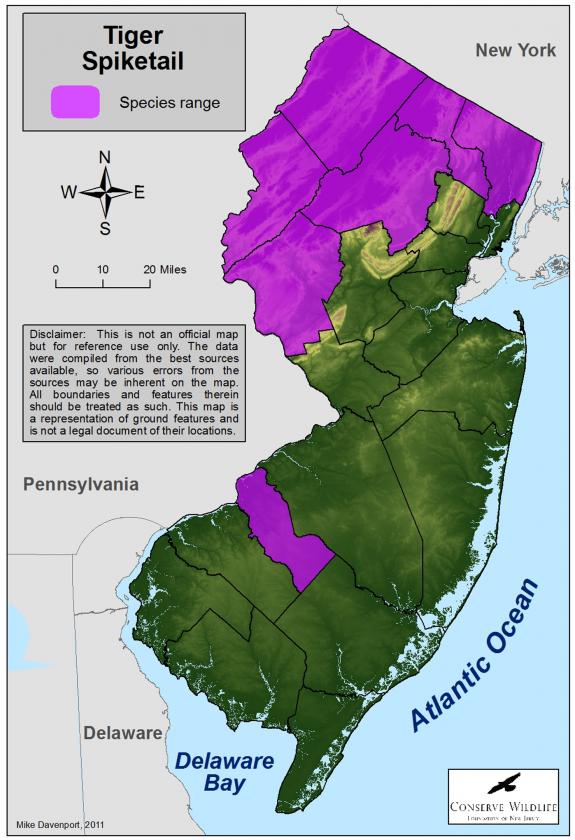Cordulegaster erronea
Type: invertebrate
Status: special concern
Species Guide
Tiger spiketail
Cordulegaster erronea
Species Type: invertebrate
Conservation Status: special concern
IDENTIFICATION
The tiger spiketail is New Jersey’s only black and yellow dragonfly. It is 2.8” – 3.3” in length with yellow rings around the abdomen. These conspicuous rings are interrupted dorsally by a fine black line. The female is patterned like the male but is usually larger and has a long spike-like ovipositor at the end of the abdomen.

Distribution & Habitat
The tiger spiketail is a forest insect. It is rarely encountered in open, sun-lit areas. Permanent coldwater forest streams and seepages are the ideal breeding habitat. The presence of skunk cabbage along the stream corridor is an indicator of appropriate habitat. It is currently known to occur in the Highlands, Ridge & Valley and northern Piedmont regions. A single colony was also recently discovered in Camden County.
Diet
Nymphs feed on aquatic invertebrate; adults on flying insects.
Life Cycle
Tiger spiketails are active from mid-June through early September. The emergence period for this species is staggered. Females lay their eggs in streams.
Current Threats, Status, and Conservation
Due to the rarity of this dragonfly and its habitat, the tiger spiketail is a Special Concern species. Habitat destruction and groundwater disturbance are two of the greatest threats facing this species.
References
Text derived from the book, Field Guide to Dragonflies and Damselflies of New Jersey. 2009. By Allen E. Barlow and Jim Bangma.
Scientific Classification
- Kingdom: Animalia
- Phylum: Arthropoda
- Class: Insecta
- Order: Odonata
- Family: Cordulegastridae
- Genus: Cordulegaster
- Species: C. erronea